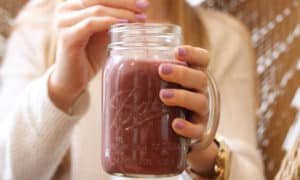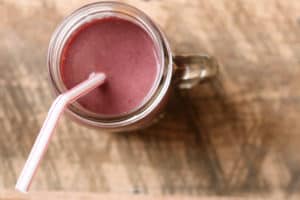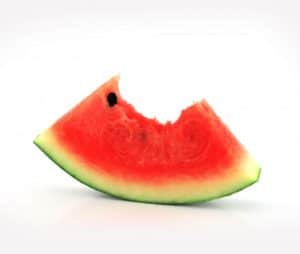Every single ingredient in this smoothie is a superfood. This smoothie is gluten-free, dairy-free, low in FODMAPs, and contains gut-healing ingredients. And with ingredients like strawberries, bananas and pineapple juice, and coconut oil, it is delicious and nutritious (for anyone). I developed this recipe for me, as a way to heal and seal my gut after all my struggles. It’s a rare and useful drink to fill my gut with everything it needs (and nothing it doesn’t!).
Pineapples contain bromelain, an anti-inflammatory compound. Coconut oil is easy to digest and it’s fatty acid structure causes it to be utilized for energy and not stored in our fat cells. But the heavy hitters in this smoothie are the L-glutamine and gelatin. Both of which can help repair leaky gut.
Recipe:
3-4 strawberries, cut up
2/3 of a whole banana, sliced up
organic fresh pressed pineapple juice
1 tb of coconut oil
1 teaspoon of gelatin (Knox brand)
1 teaspoon of L-glutamine powder (pharmaceutical grade)
Directions:
Put the cut up pieces of fruit in the blender.
Add pineapple juice just enough to cover the empty spaces between the fruit.
Put the coconut oil in a microwave safe bowl and heat it for 30 seconds to turn it liquid. Then add it to the blender.
Add the gelatin and L-glutamine
Blend and enjoy!!!
If you want a full meal-add a little of your favorite protein powder too!
PS: While the sugars in this smoothie are ALL natural (no added sugar), it is not a low carb drink and may be too high in sugar for some people.
(My recipe also appeared on Further Food Photos courtesy of Further Food as well!  )
)
Share this delicious drink with your friends using the social media buttons below!


